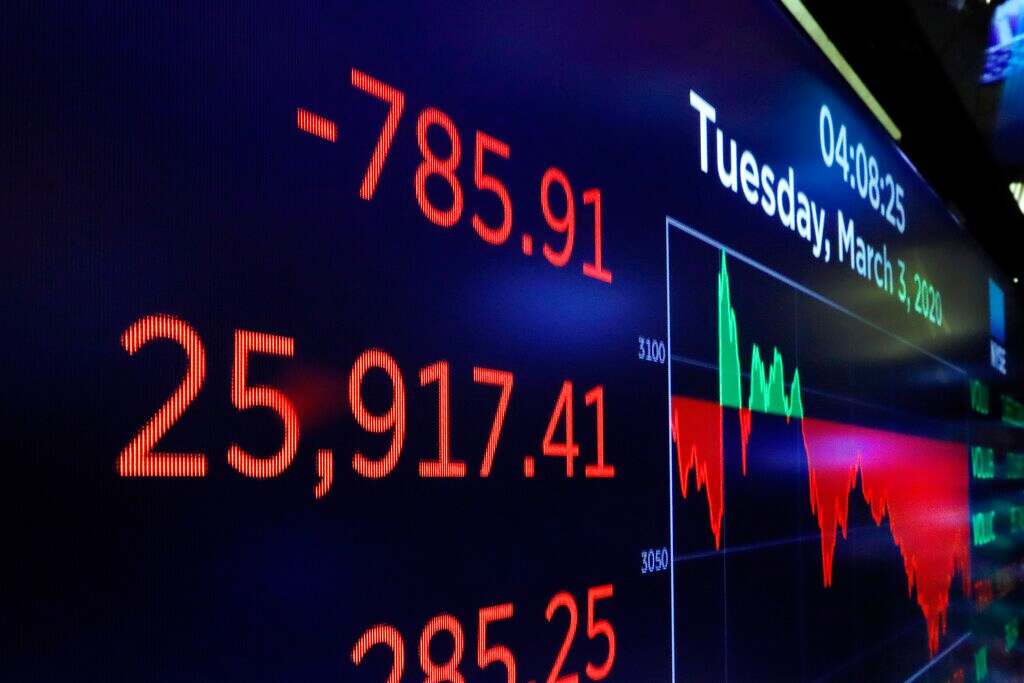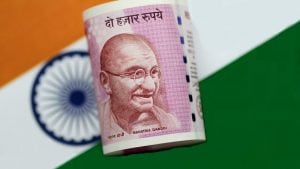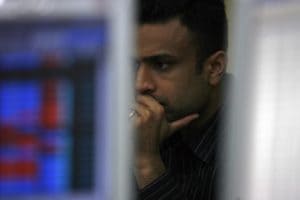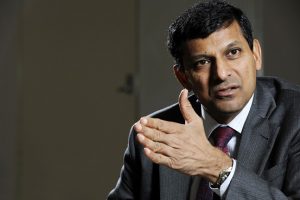Raghuram Rajan says developed markets will crack if emerging markets slow down

KV Prasad Jun 13, 2022, 06:35 AM IST (Published)
 Listen to the Article (6 Minutes)
Listen to the Article (6 Minutes)
Summary
Former Reserve Bank of India (RBI) governor Raghuram Rajan on Monday said that monetary policy cannot be the answer to all the problems, adding that developed markets will crack if emerging markets slow down.
Former Reserve Bank of India (RBI) governor Raghuram Rajan on Monday said that monetary policy cannot be the answer to all the problems, adding that developed markets will crack if emerging markets slowdown.
According to Rajan, government must take necessary action to keep bankruptcy courts unclogged with small cases and debt resolutions have to take place out of court, with the shadow of bankruptcy essentially acting as an ultimate threat for promoters and bankers.
Watch: Higher current account deficit is partly due to high crude prices, says Raghuram Rajan
Rajan said that bad loans are problem for other countries also, but clean-up by the bankers and the support by government agencies hasn’t been effective.
Edited excerpts:
Q: Well ten years on, we appear to meet once again when emerging markets are looking like on the verge of a crisis. Look at their currencies, Turkey year-to-date down 40 percent, Argentinian peso down 49 percent, South African rand and Brazilian real down 18 percent and the Indian rupee down 13 percent year-to-date. Does it look like we are on the verge of something ugly for emerging markets?
A: It’s hard to say, I think the Argentinian and Turkish case are special as they have had a history of problems and this has come to the fore recently. It does signify some concern for other emerging markets. This is not a good time for macro stability as you have to focus on reassuring markets that you are good for it and unfortunately, countries that have growing current account deficits that have large fiscal deficits look particularly vulnerable at these times.
Q: How worried should we be about India’s current account deficit and trade deficit? The last July trade deficit number was as high as $18 billion and at that, pro-rata rise in trade deficit it could be 3 percent current account deficit?
A: It’s that and you also have a large fiscal deficit. Of course, the centre has been relatively moderating, but the states have increased their fiscal deficit and at aggregate government fiscal deficit it is quite large. The fact that India is growing quite strongly gives it some positive, but in general, we have to pay attention. Now, the current account deficit is partly a result of oil prices going up, but it’s also partly a result of our export sector having being hit by the twin shocks of demonetisation as well as the GST. We need to do everything on a war footing to get the export sector back up and running. Of course, the depreciation in the rupee thus far will help, but it’s also important to focus on the impairments that hold it back to make sure that we are signaling to the markets that we are in the process of bringing down the current account deficit.
It also means that we have to be very careful on the fiscal front. We cannot afford an election year budget going forward, given the kind of turmoil that there is in financial markets. It has to be a responsible one.
Q: You are speaking in terms of cures that the rupee depreciation should help, but we should try and do more for the export sector and keep a very sharp eye out on macros like fiscal deficit. But what about instruments like interest rate hike, which we had to resort to in 2013 or even something like the special NRI bond the FCNR (B) scheme. Will it come to that?
A: I think those are always weapons you have in the armoury, but it is important, and this is one place where we have made a very important move since the last crisis. It’s very important that the RBI continue to signal as it has done so far; its concerns about keeping inflation on track, about raising interest rates, whenever appropriate to fulfil its inflation objective and that gives investor confidence that the rupee is not going to go into free fall. As ultimately, inflation will be under control and the rupee can get significantly undervalued, if it continues falling at these rates.
Q: So, basically stick to good macros as the Reserve Bank of India has been doing. Let me get your views on the global economy as well. Are there any red flags, I mean the emerging market currencies some of them are wobbly including the rupee to some extent, much lesser than the others, but should we worry about the global ambience as well, after all there are tariff wars, trade wars and they don’t seem to be ending anytime soon. Can these conflagrate into a crisis?
A: We have two big sources of vulnerability that have built up. One, of course is the leverage that has built up across the globe not just inflows to emerging markets, but also within industrial countries there are sectors that have become very highly levered. For example in the US, the shale industry is highly levered, in Australia, the housing sector is highly levered. So, pockets of leverage have built up across the world just as they had before the global financial crisis, so that is one source of vulnerability. The second important source of vulnerability is policy. As you just pointed out, trade, there are big questions over it that tends to dampen cross border investment, but it also creates an adverse effects of sentiments. Couple these together and what you have going forward is the possibility that suddenly when a country is vulnerable, you have an additional political shock, which comes from the trade side that is a volatile mix.
Now, on top of all this, we have interest rate rising, the employment numbers that came out on Friday for the America suggest that the US growth is strong and inflation is picking up, which means that the Federal Reserve will continue raising interest rates over the next few quarters. If you put this mix together, it is basically suggesting that times are going to get tighter going forward, especially for the highly leveraged entities and we will come to know where those problems are as we go forward.
Q: Some analysts earlier today, when we were discussing the rupee at 72.50 per dollar were pointing out that at the moment emerging markets have a kind of double whammy. Last time, when the Fed was raising interest rates that is 2003-2007, the US economy was doing well and Asian economies could export to it. Now, they have the negatives of the US economies doing well, which is a strong dollar and higher Fed rates, but they can’t export as much because of the tariff war. Does this makes emerging markets, particularly vulnerable and will that be the source of problems?
A: It makes them more vulnerable. I think this is a big source of uncertainty because many countries export to China and via China to the US, and this includes Latin America and much of east Asia. Of course, India is different because it’s more of a self-contained economy. But these are sources of vulnerability and unfortunately, there is very little confidence that the US administration fully recognises all these interlinkages, and that it actually worries about the feedback effects as the emerging markets slow. Now, the reality is much of world growth now is driven by the emerging markets, so the industrial world cannot be decoupled from growth in the emerging markets. We need both to grow, if the industrial countries have to do well. We have a temporary illusion that the industrial countries are growing and growing strongly and it doesn’t depend on the growth in emerging markets. That is an illusion that will crack, if in fact the emerging markets slow considerably.
Q: These kinds of instabilities and trade tariff wars are coming at a time, when the US asset prices, stock market prices are very high and so our Indian stock market prices. Are these particularly vulnerable?
A: This is a consequence in the US of the add stimulus through the tax reforms, but also the still accommodated level of interest rates. The US interest rates, despite growth being 4 percent plus in the last quarter are still – the policy rate is pretty much Zero at this point given inflation in real terms. So, what this is saying is that the monetary policy rates will have to go up and of course, that has a dampening effect on asset prices as we look forward. The broader point, I think this is something I have been saying pretty much since 2009, is that monetary policy cannot be the answer to all problems and in the West, unfortunately, it has stayed very low for very long. It has built up vulnerabilities and now as it normalises, we are seeing the consequences of those vulnerabilities come about. This is unfortunately a consequence of the very low interest rates over a long period of time.
Q: I want to look at India, the impact on India of the Lehman crisis. Some people in our series – Lehman Crisis: 10 Years On – have looked at India’s NPA crisis today as a sequel to the Lehman crisis, consequences of the exuberance which we did not recognise at that time. Would you say so?
A: There are elements. I won’t put the entire blame on Lehman. It is true that in 2007-2008, we were essentially being driven in part by very strong world economy, and because of the substantial growth in India, I think bankers and promoters were optimistic. The last run of projects had worked very well and they started a whole new set of projects. As is the tendency at these times, with more leverage less equity, more optimism about the future turns out the future wasn’t as rosy as the past. So, the crisis in the West played a part, but also to some extent in India itself, we had three rounds of fiscal stimulus after the crisis hit, which helped create the illusion that growth was still strong. While of course, the underlying factors that drove growth had slowed considerably and that also helped eventually slowed down projects that were underway. Many of these projects from 2007, 2008 and 2009 have slowed because of the overall slowness in the economy, plus of course, a variety of other factors such as governance.
Q: We understand that the parliament’s estimates committee approached you to get your views on the causes of the NPAs and the way forward. I believe that you have identified bankers over optimism as one reason, but also incompetence and corruption. How much would you worry that bankers may have been in cohorts with promoters?
A: I think it is very hard to say without actually investigating in more detail and my worry is, we tend to look at one-off situation – a loan going bad. Well, bankers have to exercise business judgement and if the overall economic environment is one of optimism, they get infected by that. The fact that a loan goes bad, when it’s made under such circumstances, doesn’t necessarily signifies corruption or even incompetence. It could signify the general expectation is of strong growth. I don’t think bankers should be faltered for that. The real problems comes, however, that when you have identified loans going bad, you should work very hard to either put them back on track or essentially get out if you can, and that process hasn’t worked well in India.
The exuberance, the bad loans that is something other countries have also to experience, but the clean-up both by the bankers’ side as well as the support given by government agencies and so on hasn’t worked as effectively.
Q: We are now pinning a lot of hope on the bankruptcy code and the National Company Law Tribunal (NCLT) process, at least two big defaulters have been brought to book and cheques have been written by new promoters to the bankers. Are you now more confident that the stock of defaulters, the stock of bad loans will be resolved sometime soon?
A: I have a more detailed note on my website and that’s my reply to the parliamentary estimates committee. People could look at that for a more detailed view, but I think the bankruptcy code is very important, useful development, but we have to see how it plays out. Remember, when Securitisation and Reconstruction of Financial Assets and Enforcement of Security Interest (SARFAESI) was brought in, when the debt recovery tribunals were brought in, there was a lot of anticipation that these would resolve previous debt problems and very soon the codes got clogged in appeals, counter appeals and essentially, recoveries started dropping very quickly after the initial successes. It’s very important that we make sure that the bankruptcy code do not succumb to that very same process, which means that they have to deal with high value items, a relatively small number. But much of the bankruptcy resolution has to take place out of court, with the shadow of bankruptcy essentially acting as an ultimate threat for promoters and bankers, who do not get their act together. It is not the place of the bankruptcy code to deal with every single situation of distress. If we try and do that – there is simply not enough capacity in the system to handle that and we will find we are back to square one.
Q: I guess many people are trying to resolve problems before they go to the NCLT, but the RBI has now made it practically mandatory that all loans above Rs 2,000 crore, if stressed and not resolved for six months, should go to the NCLT. That is not the way to go. You think it can clog the NCLTs?
A: I think the point here is to give some time for people to try and resolve their problems and to essentially make sure it is not indefinite. I think you can pick the time that you give, but ultimately, there has to be a treat, if they do not resolve it, then it goes to the final showdown. So what we have to hope is much of the resolution gets down outside, bankers sign on to it, the promoters bring in equity, we get the projects back on track rather than leave them languishing – that will beneficial to the country and to its growth. In the meantime, the NCLT deals with a few really tough cases.
Q: In this series – the Lehman crisis and the bill that India had to pay, I spoke with Dr Subbarao as well and we kind of agreed that yes, the RBI’s regulatory forbearance could have been responsible for exacerbating the NPA load later on. How would you look at the Rajan era itself? Would you have wanted to have done asset quality review (AQR) earlier or done something different so that the load is not so big now?
A: One always tries to justify oneself, but here’s the situation with forbearance. Clearly, forbearance is a bet that somehow growth will allow NPAs to get resolved by themselves without action. And unfortunately, when the RBI initiated forbearance soon after the Lehman crisis, growth actually started deteriorating rather than picking up. There was a period over which forbearance was announced and certainly in my time, we stuck to that period as soon as that period was over, we ended it. However, it was important, during that period to create ways that the bankers could move forward to resolve the NPAs. There is no point ending forbearance without them having any tools to essentially restructure the loans and put them back on track along with the promoter. In our sense, there were very few levers that the bankers had over the promoters. So, much of 2014 was spend trying to create those levers. In fact, when we stopped forbearance, the bankers would actually had some ways to bring the promoters to the table and restructure those loans in an effective way. Remember, we didn’t have the bankruptcy code then and we pushed for getting it done, but we simply didn’t have that in place to restructure the loans. So, in entire out of court restructuring, all these fancy names, SDR and this that were put in place precisely to create an artificial bankruptcy code. In fact with Sebi, we made it possible for the bankers to excise the promoter from the transaction, if the promoter proved recalcitrant. Now, I think with the bankruptcy code, we have a more effective tool, but much of 2014 before the AQR was initiated, was spent trying make sure the bankers had the means in which to resolve these bad debts.
Q: Now that your paper is in the public domain, I am tempted to read out of it. You say that the size of frauds in public sector banking system have been increasing though it is still a small part of the NPA load and then you go on saying that you had sent a list to the Prime Minister’s office of the list of fraudsters so that there can be coordinated action. Could you get any action on that list?
A: I do not know what has happened so far. The idea was that the 10 biggest fraudsters should be identified, special action taken, so that if one or two are brought to justice, it sends a message, we will come after you, we will ensure the you face penalties. Unfortunately, the tendency has been these things take a lot of time, before they label frauds and once they label frauds, it takes forever to follow the money trail and to get anything that convinces foreign courts, because many of these guys have skipped the country and gone abroad, convinces foreign courts that there is a case at hand. So, my worry is that a lot of frauds go un-penalised. Often the guy’s closets to the fraud, the bankers are interrogated sometimes in imprison, sometimes rightfully, but the criminals on the other side typically get away, got free and this has to change. There has to be a sense that they will be punishment, otherwise we will see an escalating level of frauds.
Q: Is the worst over in terms of NPAs or is this problem going to stick with us for a couple of years more to even just clear the stock?
A: There are two things about the stock. First, as the stock ages and you haven’t dealt with the problem, the NPAs rise, because the provisioning for every loan that went bad keeps increasing with age. So, there was some of that which takes place a natural increase in the stock. Also, it is important that whatever new projects, there they find healthy environment and they grow. My sense is the slowdown in credit essentially implies that there will be relatively few projects to get into trouble – this is not good news. We do need far more investment. Sure, there will be NPLs from that investment, but hopefully at a much lower level if credit is sensible, but the fact that credit in general has slowed is a concern. It reflects concerns amongst bankers, amongst promoters about the overall economic environment and that has to change for India to grow more strongly.
Q: The rupee itself would you just worry that it is falling every single day and the emerging markets scenario is not getting any better? Are we in a slippery slopes, scary times at all?
A: Again, I would say that as you read out those levels of depreciation since the beginning of the year, we are not an extreme outlier there – that is not necessarily a source of comfort. However, we must remember that the way the rupee behaves is typically long periods of stability followed by some serious volatility during times like these. This has been the case in the past. We have tried certainly during my time to allow some depreciation given that the Indian inflation rate was higher than the world inflation rate and we didn’t want the rupee to get overvalued. But there is only so much you can do that.

Elon Musk forms several ‘X Holdings’ companies to fund potential Twitter buyout
3 Mins Read
Thursday’s filing dispelled some doubts, though Musk still has work to do. He and his advisers will spend the coming days vetting potential investors for the equity portion of his offer, according to people familiar with the matter

KV Prasad Journo follow politics, process in Parliament and US Congress. Former Congressional APSA-Fulbright Fellow









 Listen to the Article
Listen to the Article 
 Daily Newsletter
Daily Newsletter







